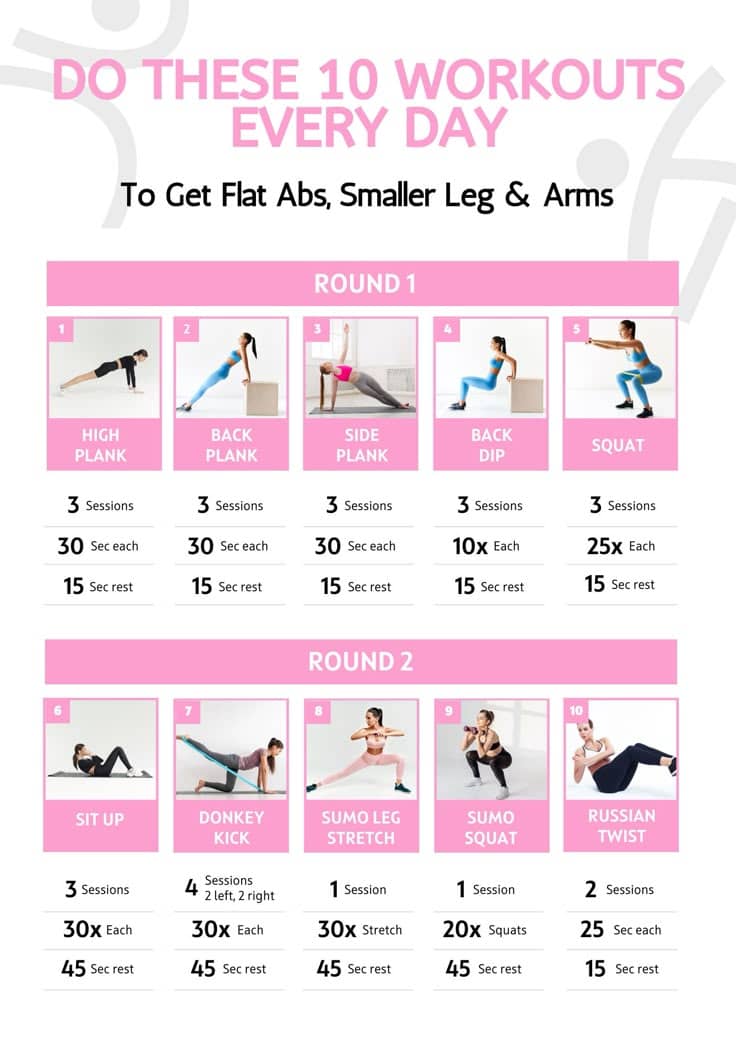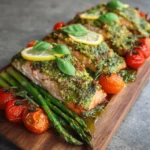10 Daily Workouts for Flat Abs, Lean Arms, and Slimmer LegsAre you looking for an effective way to strengthen your core, tone your arms, and shape your legs—all in one simple, straightforward routine? Look no further. The following 10 workouts, divided into two rounds, have been carefully selected to target every major muscle group you need to achieve flat abs, lean arms, and slimmer legs. By performing these exercises consistently, you can make a significant difference in your overall fitness and physique. This article will break down each move, provide tips for proper form, and offer advice on optimizing your workout routine for the best results. Let’s get started on your journey to a stronger, healthier you!
Table of Contents
- Why a Daily Workout Matters
- Equipment and Preparation
- Round 1 Exercises
- Round 2 Exercises
- Tips for Success
- Common Mistakes to Avoid
- Frequently Asked Questions
- Final Thoughts
1. Why a Daily Workout Matters
Maintaining a daily workout routine is one of the most powerful ways to stay fit and support long-term health. While consistency is crucial, it’s equally important to ensure that the exercises you choose target your goals effectively. Whether you’re aiming for flat abs, toned arms, or slimmer legs, the following benefits emphasize why performing these workouts every day can make a tremendous impact on your body and well-being:
- Improved Metabolism: Daily physical activity can boost your metabolic rate, helping your body burn calories more efficiently throughout the day.
- Better Posture and Balance: Plank variations, squats, and core movements can strengthen your back and abdominal muscles, promoting good posture and balance.
- Enhanced Muscle Tone: By combining full-body movements like squats with targeted exercises such as donkey kicks, you work multiple muscle groups—resulting in a lean, defined look.
- Increased Confidence: As you see improvements in your strength and endurance, you’ll likely feel more confident and motivated to keep going.
- Stress Relief: Exercise releases endorphins, which are natural mood boosters. Incorporating a consistent workout routine into your daily life can help reduce stress, improve sleep, and keep you energized.
2. Equipment and Preparation
Most of the exercises in this routine rely on your body weight alone, making them accessible and convenient. Here’s how to prepare:
- Space: Find a comfortable space with enough room to move freely. A living room, backyard, or open space in your bedroom can work perfectly.
- Mat: Although optional, an exercise mat provides cushioning for exercises like planks, side planks, and sit-ups.
- Chair or Bench: A sturdy chair or bench can help with back dips to stabilize your upper body.
- Clothing: Wear comfortable, breathable workout clothes that allow you to stretch and move with ease.
- Hydration: Keep water nearby to stay hydrated, especially if you’re doing multiple rounds or adding extra cardio to your routine.
- Warm-Up: Start with 5–10 minutes of light cardio—such as marching in place, jumping jacks, or a brisk walk—to increase blood flow and reduce injury risk.
3. Round 1 Exercises
Round 1 consists of five exercises: High Plank, Back Plank, Side Plank, Back Dip, and Squat. Each exercise is performed for 3 sessions unless otherwise noted, and you’ll aim for the following structure:
- High Plank: 3 sessions × 30 seconds each, 15 seconds rest
- Back Plank: 3 sessions × 30 seconds each, 15 seconds rest
- Side Plank: 3 sessions × 30 seconds each, 15 seconds rest
- Back Dip: 3 sessions × 10 repetitions each, 15 seconds rest
- Squat: 3 sessions × 25 repetitions each, 15 seconds rest
Let’s explore each move in detail.
1. High Plank
Why It’s Great
The High Plank is a core-strengthening classic. This position engages your abs, arms, shoulders, and back, helping build a strong foundation for the rest of your exercises.
How to Do It
- Start in a push-up position with your hands shoulder-width apart.
- Keep your legs extended straight behind you, feet hip-width apart.
- Engage your core by tightening your abdominal muscles.
- Maintain a straight line from head to heels, avoiding any arch or sag in the back.
- Hold the position for 30 seconds.
Tips for Success
- Keep your gaze slightly ahead of your hands to avoid neck strain.
- Press away from the floor through your palms, keeping shoulders active and stable.
- If it’s too challenging, place your knees on the ground while keeping your back straight.
2. Back Plank
Why It’s Great
Also known as a reverse plank, the Back Plank works your posterior chain (the muscles along the back of your body), including your glutes, hamstrings, and lower back. It also engages your triceps and shoulders.
How to Do It
- Sit on the floor with your legs extended forward and your hands just behind your hips, fingers pointing toward your feet.
- Press through your hands and lift your hips up, forming a straight line from your shoulders to your heels.
- Look towards the ceiling, but keep your neck in a neutral, comfortable position.
- Engage your core, squeeze your glutes, and hold for 30 seconds.
Tips for Success
- Avoid letting your hips drop; keep them lifted.
- If you feel strain in your wrists, try slightly rotating your hands outward or use a supportive surface like a bench.
- Keep your legs straight and your toes pointed forward to maximize the posterior chain engagement.
3. Side Plank
Why It’s Great
Side Planks target the obliques (the muscles on the sides of your waist), helping define and strengthen your core. This exercise also stabilizes your spine.
How to Do It
- Lie on your side with your legs extended, one foot stacked on top of the other.
- Place your forearm on the ground, elbow directly under your shoulder.
- Lift your hips off the ground, forming a straight diagonal line from your head to your heels.
- Hold for 30 seconds, then repeat on the other side.
Tips for Success
- Keep your shoulders and hips stacked.
- If it’s too challenging, bend your lower knee for added support.
- Engage your oblique muscles by tightening the side of your waist.
4. Back Dip
Why It’s Great
The Back Dip (also known as the Bench Dip or Tricep Dip) is an excellent exercise for toning the backs of your arms (triceps) and building shoulder stability.
How to Do It
- Sit on the edge of a sturdy chair or bench with your hands gripping the edge, fingers pointed forward.
- Slide your hips off the seat and extend your legs in front of you.
- Keeping your elbows close to your body, lower your hips by bending your elbows to a 90-degree angle.
- Push back up through your palms to straighten your arms. Perform 10 repetitions.
Tips for Success
- Keep your chest lifted and shoulders rolled back.
- Avoid locking your elbows at the top of the movement.
- Maintain control on the way down and up to prevent jerky motions.
5. Squat
Why It’s Great
Squats are a powerhouse move for your lower body, targeting the quadriceps, hamstrings, and glutes. They also help improve core stability.
How to Do It
- Stand with your feet shoulder-width apart.
- Engage your core, keep your chest lifted, and begin to lower your hips as if you’re sitting back into a chair.
- Bend your knees until your thighs are parallel to the floor (or as low as comfortable).
- Drive back up through your heels and return to standing. Perform 25 repetitions.
Tips for Success
- Keep your knees in line with your toes to avoid knee strain.
- Focus on using your glutes and hamstrings to power the movement.
- Avoid rounding your back—maintain a neutral spine throughout the exercise.
4. Round 2 Exercises
In Round 2, you’ll challenge your core and lower body further with Sit-Ups, Donkey Kicks, Sumo Leg Stretch, Sumo Squats, and Russian Twists. The structure is:
- Sit-Up: 3 sessions × 30 reps each, 45 seconds rest
- Donkey Kick: 4 sessions (2 left, 2 right) × 30 reps each, 45 seconds rest
- Sumo Leg Stretch: 1 session × 30 seconds stretch, 45 seconds rest
- Sumo Squat: 1 session × 20 squats, 45 seconds rest
- Russian Twist: 2 sessions × 25 seconds each, 15 seconds rest
Let’s break these down.
6. Sit-Up
Why It’s Great
Sit-Ups are a classic abdominal exercise that specifically targets your rectus abdominis (the “six-pack” muscle).
How to Do It
- Lie on your back with your knees bent and feet flat on the floor.
- Cross your arms over your chest or lightly place your fingertips behind your ears.
- Engage your core, exhale, and lift your upper body off the floor.
- Slowly lower yourself back to the starting position. Perform 30 repetitions per session.
Tips for Success
- Keep your feet firmly on the ground; avoid lifting them up.
- Do not pull on your neck—if you place your fingers behind your head, keep your elbows wide.
- Exhale as you sit up to maximize abdominal engagement.
7. Donkey Kick
Why It’s Great
Donkey Kicks primarily work the glutes, helping to lift and shape the butt while also engaging the core for stability.
How to Do It
- Start on all fours with knees beneath your hips and hands beneath your shoulders.
- Keeping your knee bent at a 90-degree angle, lift one leg up and back, driving your heel toward the ceiling.
- Squeeze your glutes at the top of the movement, then lower your leg back to the starting position without touching your knee to the ground.
- Perform 30 repetitions on one leg before switching to the other. Complete 4 total sessions (2 on each leg).
Tips for Success
- Maintain a neutral spine throughout; avoid arching your back.
- Keep your hips parallel to the floor, focusing on the glutes for lifting your leg.
- Move slowly and with control to maximize muscle engagement.
8. Sumo Leg Stretch
Why It’s Great
This stretch targets your inner thigh muscles (adductors) and helps improve hip flexibility—essential for squats and lunges.
How to Do It
- Stand with your feet in a wide stance, toes pointed outward at about a 45-degree angle.
- Shift your weight to one side, bending that knee while keeping the other leg straight.
- You should feel a deep stretch in your inner thigh.
- Hold for about 30 seconds, then switch sides.
Tips for Success
- Keep your back straight; avoid hunching forward.
- Only go as deep as comfortable—never force a stretch.
- Inhale to prepare, exhale as you deepen into the stretch.
9. Sumo Squat
Why It’s Great
Similar to a traditional squat but with a wider stance, the Sumo Squat targets your inner thighs and glutes, helping to shape your lower body.
How to Do It
- Stand with your feet wider than shoulder-width, toes pointed outward.
- Engage your core and lower your hips, bending your knees outwards in line with your toes.
- Keep your chest lifted and your back straight.
- Drive back up through your heels to return to standing. Perform 20 squats.
Tips for Success
- Focus on pushing your knees outward to avoid knee cave.
- Keep the weight in your heels for maximum glute and thigh engagement.
- Maintain a slow and controlled tempo.
10. Russian Twist
Why It’s Great
Russian Twists are a highly effective exercise for developing rotational core strength, targeting the obliques, and improving balance.
How to Do It
- Sit on the floor with your knees bent and feet either lifted slightly off the ground (for an advanced variation) or placed firmly on the floor (for more stability).
- Lean back so your torso is at a 45-degree angle to the floor.
- Clasp your hands together in front of your chest.
- Twist your torso to the right, then back through center, and to the left—counting each side.
- Perform 25 seconds of continuous twisting for 2 sessions, with 15 seconds rest in between.
Tips for Success
- Engage your core throughout to maintain balance.
- Keep your movements controlled; avoid jerking or flailing your arms.
- Exhale as you twist to each side.
5. Tips for Success
To get the most out of this daily workout routine and see true progress in flattening your abs, toning your arms, and slimming your legs, consider the following tips:
- Maintain Consistency
- Aim to perform these 10 exercises every day if possible. If you need to skip a day for rest or due to scheduling constraints, pick back up as soon as possible.
- Prioritize Form Over Speed
- It’s better to do fewer reps or hold a plank for less time with correct form than to rush through and risk injury.
- Mind Your Diet
- Exercise alone won’t give you the results you desire without a balanced diet. Incorporate plenty of fruits, vegetables, lean proteins, and whole grains.
- Stay Hydrated
- Proper hydration helps regulate body temperature, lubricates joints, and supports muscle recovery.
- Include Cardio
- Adding light to moderate cardio (like jogging, cycling, or brisk walking) can accelerate fat loss, further revealing those toned muscles.
- Get Enough Sleep
- Adequate rest supports muscle recovery, hormone balance, and overall well-being, which helps you see results faster.
- Progress Gradually
- If you feel the routine is too easy over time, increase the duration, the number of reps, or add light weights/bands for extra resistance.
6. Common Mistakes to Avoid
- Holding Your Breath
- Always breathe steadily and intentionally during exercises. Exhale during the exertion phase and inhale on the release.
- Overtraining
- While a daily routine can be beneficial, if you feel excessive fatigue, muscle soreness, or joint pain, consider active rest or light mobility work instead of a full workout.
- Poor Posture
- Rounding your back or letting your hips sag in planks can lead to lower back strain. Focus on form to prevent injuries.
- Ignoring Pain
- Discomfort and muscle burn can be normal, but if you experience sharp or persistent pain, stop and consult a fitness professional or medical provider.
- Skipping Warm-Ups and Cool-Downs
- Not preparing your body for exercise can increase injury risk. Similarly, gentle stretching after your workout can aid recovery.
7. Frequently Asked Questions
Q1: How long does it take to see results?
Answer: Results vary based on factors like diet, metabolism, and exercise intensity. Generally, you may notice improvements in strength and stamina within 2–4 weeks, while more visible changes in muscle tone may take 6–8 weeks of consistent effort.
Q2: Can I combine these exercises with weights?
Answer: Absolutely. Once you feel comfortable with bodyweight versions, incorporating light dumbbells or resistance bands can increase difficulty and promote further muscle development.
Q3: What if I only have time for one round?
Answer: Doing even a single round of these exercises is better than skipping your workout entirely. Adjust the routine as needed to fit your schedule, but aim to complete both rounds for best results.
Q4: I have knee pain—are squats safe?
Answer: If you have knee issues, reduce the range of motion during squats (do half-squats) or consult a professional to determine modifications. Always prioritize pain-free movement.
Q5: Is it okay to do these exercises on consecutive days without rest?
Answer: These bodyweight exercises are generally low-impact, but always listen to your body. If your muscles feel overly fatigued, incorporate an active rest day or low-impact activities like yoga or swimming.
8. Final Thoughts
Achieving flat abs, lean arms, and slimmer legs doesn’t require fancy equipment or complicated gym machines. By committing to these 10 daily exercises and focusing on a balanced approach—good nutrition, proper hydration, and enough sleep—you can significantly improve your fitness level, muscle tone, and overall health. Remember, the key to long-term success is consistency and gradual progress. Celebrate your small wins, track your improvements, and keep your eyes on the bigger picture: a healthier, stronger body that supports you in every aspect of daily life.
Disclaimer: Always consult your physician or a certified fitness professional before starting any new workout program, especially if you have pre-existing health conditions or injuries. This workout routine is intended as general guidance, and individual results may vary.
By following these exercises daily and maintaining a supportive lifestyle, you’ll be well on your way to building the physique you’ve always wanted. So go ahead—roll out your mat, grab a bottle of water, and power through these 10 moves. Embrace the burn, enjoy the process, and remember that every rep brings you one step closer to your goals. Good luck, and happy training!










